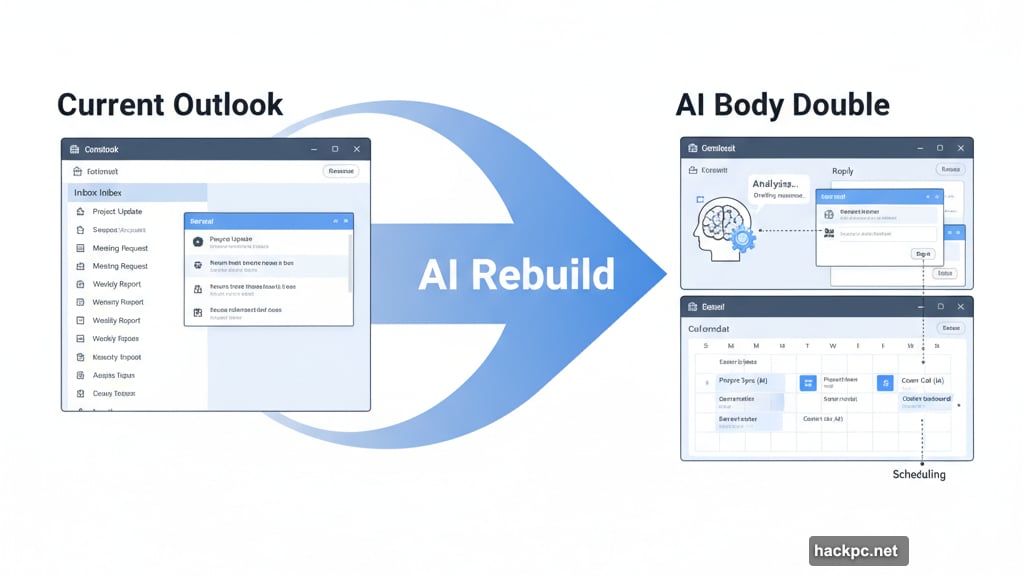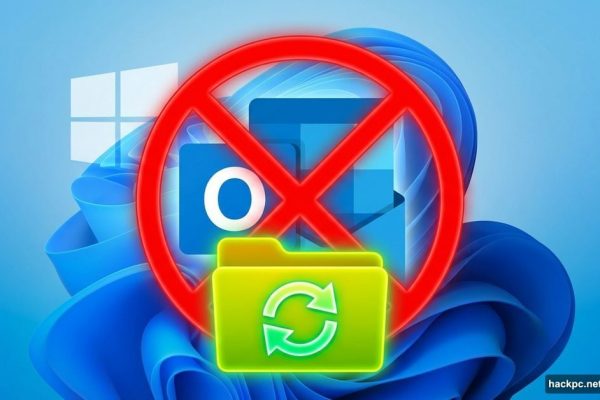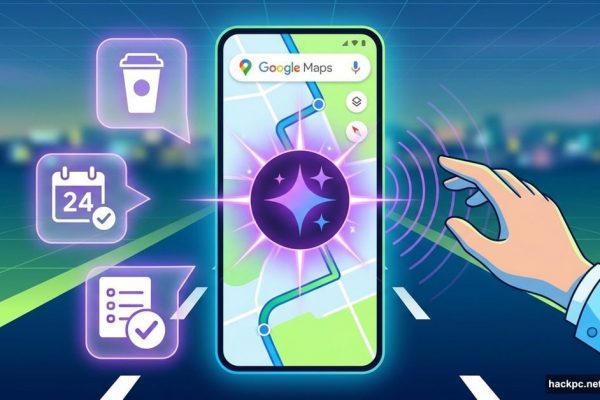
Microsoft just reorganized its Outlook team under fresh leadership. The mission? Rebuild the email client from scratch for AI.
Gaurav Sareen took over as the new leader after Lynn Ayres stepped away for sabbatical. His vision sounds ambitious. Maybe too ambitious. Instead of adding AI features to existing Outlook, Microsoft wants to reimagine the entire email experience around artificial intelligence.
Think Body Double, Not Email Client
Sareen’s internal memo paints a picture of Outlook as your “body double” at work. The email client would read messages, draft replies, and manage your calendar automatically.
That’s a big shift from today’s Outlook. Right now, you check email, write responses, and schedule meetings yourself. Microsoft wants AI to handle most of that work instead.
Plus, Copilot already does some of this stuff. So it’s unclear how Outlook’s AI features would differ from Microsoft’s existing assistant. The memo doesn’t explain that part clearly.
Speed Matters More Than Ever
Here’s where things get interesting. Sareen wants weekly feature experiments instead of quarterly releases. Prototypes should take days, not months.
That’s a dramatic culture shift for Microsoft. The company typically moves slower, especially with products that millions of business users depend on daily.
But Sareen thinks AI demands faster iteration. He’s betting that weekly experiments will help the team find winning features quickly. However, that approach could backfire if rushed features break critical workflows.

The One Outlook Struggle Continues
Microsoft has been fighting to perfect its web-based “One Outlook” for years now. The new version is supposed to replace Windows, Mac, and web versions with a single codebase.
Progress has been slow. Many users complain the web version lacks features from the desktop apps it’s replacing. Some businesses refuse to upgrade because critical tools don’t work yet.
Now Sareen wants the same team to add a massive AI overhaul on top of that unfinished work. That’s a lot of pressure on developers already struggling with the basic transition.
Why This Feels Risky
Executives worldwide run their lives through Outlook calendars. One wrong AI move could mess up important meetings, send emails to wrong people, or delete critical messages.
Microsoft knows this. But Sareen’s memo asks employees to show “courage” and “let go of old ways of working.” That sounds great in motivational emails. It’s terrifying when you’re talking about software that CEOs and managers trust with their entire work lives.
Moreover, Microsoft employees aren’t all sold on the AI vision. Sources tell me plenty of workers question whether all this AI investment makes sense. They see Copilot usage numbers and wonder if customers actually want these features.
LinkedIn’s CEO Now Runs Office
The Outlook changes fit into Microsoft’s broader AI reorganization. Ryan Roslansky, LinkedIn’s CEO, took over as head of Office earlier this year. That’s right – the LinkedIn boss now controls Word, Excel, PowerPoint, and Outlook.
Sareen reports to Roslansky. Both face the challenge of convincing employees and customers that AI belongs at the center of productivity tools.

But there’s a credibility problem. Microsoft spent years pushing Cortana as a voice assistant. People ignored it. Then Microsoft pivoted to Copilot. Guess what? Most users still prefer ChatGPT instead.
The Real Competition Is Internal
Here’s the uncomfortable truth: OpenAI is both Microsoft’s biggest partner and its biggest competitor. Microsoft invested billions in OpenAI and powers Azure’s AI services. Yet consumers choose ChatGPT over Copilot by huge margins.
That puts massive pressure on teams like Outlook to prove Microsoft can build AI products people actually want to use. Sareen’s memo acknowledges this pressure. He writes that “next year, every product will claim to be AI native.”
So Microsoft needs Outlook to stand out from competitors who just “slap AI on products.” The question is whether rebuilding an email client around unproven AI features is the right bet.
What Comes Next
Microsoft hasn’t announced a timeline for these Outlook changes. But Sareen’s emphasis on weekly experiments suggests we’ll see new features rolling out gradually.
Expect AI-powered email drafting first. That’s table stakes now. Then look for smarter calendar management and meeting scheduling. Finally, watch for deeper integration between Outlook and the broader Copilot ecosystem.
The big test will be whether business users trust AI with their most important work tool. Email mistakes cost people jobs. Calendar errors ruin million-dollar deals. One bad AI suggestion could undermine trust for years.
Microsoft is betting everything on AI. That includes products like Outlook where the stakes couldn’t be higher. We’ll find out soon whether customers want an AI body double or just a reliable email client.



Comments (0)